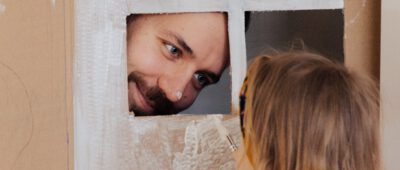To own a home is the great Australian dream. Most people work hard throughout their lives to realise that aspiration and by age 65, according to Australian Institute of Health and Welfare figures, about three-quarters have achieved it.
But even retirees who own their home sometimes find it difficult to cover daily living expenses and unexpected costs.
Interest rates and bond yields have been at historic lows for several years, while blue-chip companies have more recently been slashing dividends to cope with economic uncertainty. These factors are making it harder for people who rely on investments to generate sufficient income.
Freedom to choose
A reliable income gives people freedom, National Seniors Australia chief advocate Ian Henschke says.
One businessman Henschke knows wanted to keep working until age 100. He was able to pay for staff to clean and cook for him, and to drive him to meetings. Paying for care allowed him to stay connected to the community and keep doing what he loved.
“People should see paying for services as an investment. They might spend $10,000 a year to go away on holiday or they could spend $10,000 a year to stay in their own home. People should be prepared to do that,” he says.
For older retirees, being able to afford the costs of cleaning, meals and personal care could mean the difference between living at home or moving into aged care.
The federal government does offer financial assistance on top of the age pension to support people to continue living at home through its Home Care Packages Program, but some people find the payments inadequate.
“They might have a home care package that has been allocated to them and they are buying extra care,” Henschke says.
More importantly, it can take over a year to receive the funds. Over 100,000 people are on the waiting list for a home care package and the Royal Commission into Aged Care Quality and Safety heard evidence that around 16,000 people died while waiting for funds and a further 14,000 went into aged care homes against their wishes.
“That’s more than 2000 people a month who died or went into aged care when they did not wish to,” Henschke explains.
Smooth Retirement chief executive Scott Phillips confirms the extent of the problem, revealing he regularly meets senior homeowners who need income and are feeling stressed about their finances.
“I have clients who have got $2 million to $3 million houses, are on full pensions, have nothing left in super and are finding it tougher to get by on $36,000 a year,” Phillips says.
It is clear senior homeowners who have little savings face some difficult choices: either downgrade their lifestyle to get by on government payments or tap their remaining asset – the family home – to cover their expenses.
“We have a view that most Australians will have to use some of the value in their home at some time in their retirement,” Phillips notes.
Selling the family home does free up funds, but it is rarely a first choice. More than nine out of 10 older Australian homeowners aspire to keep their property throughout their life, a report from the Australian Housing and Urban Research Institute found. The safety, security and comfort of having a place to call home were too critical to relinquish.
“People want to stay in a place that they live but also feel part of the community,” Phillips reveals.
“If they move, there can be a dislocation and they are no longer part of the fabric of the community with access to family and friends.”
Aside from the emotional factors, there are financial consequences.
There are high transaction costs involved in selling and buying property, such as stamp duty, real estate agent and legal fees, and removal costs.
Also, selling the home may reduce age pension benefits. Equity in the family home is not considered in determining eligibility for government age pension benefits, while other investments are.
Income on investments held outside of superannuation also attracts tax.
Retirees can contribute up to $300,000 from the sale of their family home into superannuation through the downsizer measures that started in July 2018. Income and capital gains in super are tax free for people aged over 60, but Phillips says few people have taken advantage of the downsizer policy.
“It’s expensive and complex and people tend to keep money out of super when they sell their home,” he says.
Use the home
Another option for senior homeowners looking for a greater level of income is to use an equity release product or reverse mortgage to take money out of the property without having to move.
“A reverse mortgage is a credit product, an instrument of debt, while an equity release product is an instrument of equity,” Phillips says.
With a reverse mortgage, the homeowner takes out a loan secured against their home, freeing money to pay for expenses. Interest is capitalised against the property. When the owner sells, the debt is repaid, including the accrued interest.
“The risk with a reverse mortgage is that if your house does not go up in value, you lose out on the interest,” Phillips explains.
“The counter side to that is if your property goes up in value, you share in the capital gain.”
Laws protect homeowners from being forced to move out or sell before they are ready to do so, and prevent them from ending up owing more than the property is worth.
Equity release products, such as those offered by DomaCom allow seniors to sell part of their property to one or more investors.
The home’s title stays with the owner and they do not incur debt. The owner can continue to live at the property for as long as they want.
The financial products are registered with the Australian Securities and Investments Commission. They operate in a similar way to a syndicate, with investors owning a fraction of the property’s equity.
When the senior decides to sell the property, they receive their proportion of the net sale proceeds, while the investors take a share in proportion to the amount they invested.
“With equity release there is no interest rate risk, but you miss out on the capital gains on the portion you no longer own,” Phillips says.
With both types of products, funds can be taken as a lump sum or an income stream.
As with any financial decisions, it’s important to seek advice from a qualified financial planner. It is important to note financial planners must be accredited with DomaCom before they can provide advice on the manager’s seniors equity release products.







